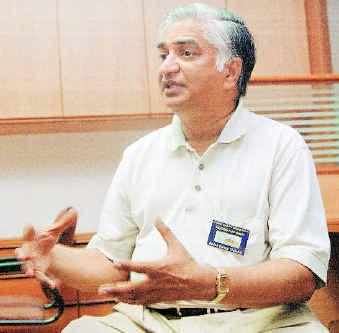Contribute
| Technology: Rainwater Harvesting - Part I |
Ram Krishnan
01/25/2006
Rainwater Harvesting (RWH) “No water, No life†What is Rainwater harvesting? All forms of water anywhere in the world starts as rainwater. The total amount of drinking water in the world is about 1% of the total water mass. The following comments are specific to India. We have 2 seasons in India – floods and drought. Nothing in between. We all remember the recent floods in Mumbai, including that one-day when it poured 26†of rain. Within 3 weeks, Mumbai municipality took care of the floods. Then people started looking for fresh water to drink. Where do you think all the rainwater went in the city of Mumbai? We converted fresh drinkable rainwater into storm water and sewage and added to the Arabian Sea. India gets 2 monsoons – the SW monsoon during June, July, August, September, the NE monsoon during October and November. In most parts of India, the actual number of hours it rains during the whole year is under 100 hours. It is dry and hot during the rest of the year. Water harvesting is ‘capturing the rain water, storing it, using it later’. Nature does this on its own, until we interfere with that process. Best examples of how we have upset this natural process can be found in our large metropolitan cities. We have paved the earth with roads, parking lots, high-rise buildings, shopping malls, fly-overs making it difficult for the rains to be absorbed underground. Why should we do RWH? Water is essential to every form of life, agriculture, cattle. In Chennai, a coastal community called Besant Nagar, the local water supply dried up 2 years ago forcing people to vacate many apartment buildings and move to other parts of Chennai. Three thousand farmers in Andhra Pradesh stressed by their debts and lack of rain, committed suicide in the first 6 months of 2005. Hindu Newspaper Rural affairs editor, P.Sainath tells us that there are 47 busloads every week, taking people from his village of Anathapur with no water, looking for jobs in Maharashtra. Water Harvesting is an old traditional method followed in India when the Maharajas ruled India. Mahathma Gandhiji’s house in Porbander had a storage tank on one side to collect rainwater. Is RWH practiced in the US The city of Austin Texas encourages its residents to install rainwater harvesting by providing rain barrels. The King County main building in downtown Seattle, uses the entire basement to hold collected rainwater from the roof. Other municipalities are exploring RWH as more and more US communities face water scarcity. How to do it? Rainwater harvesting is simple, low cost and is done in many parts of India. We need to learn from these success stories and encourage everyone to do it. “Stop the flow of waterâ€. If we do not stop the flow of water, 90% of the rainwater will be lost due to evaporation and converted into storm water. The application of Rainwater Harvesting in the rural areas is completely different from the urban application. Urban The best case of RWH application in a large metropolitan city in India has taken place in Chennai (Madras) in the State of Tamil Nadu. In July 2003, the State Government of Tamil Nadu passed an ordinance that all buildings in the entire state will install RWH. The underground water levels in the City of Chennai has come up 3 to 4 feet in just 1 monsoon, according to Chennai Metrowater, the agency responsible for providing drinking water for the city of Chennai. (1) Collect the roof water The following links will explain these methods. Pictures from Rain Centre in Chennai, Tamil Nadu For a single dwelling house in Chennai, it would cost about Rs 6,000 to install. Most of the RWH components already exist. The typical house will have an existing sump designed to get and store municipal supply water. It will also have an electric motor to pump this water from the sump to an overhead storage tank on the rooftop and distribute water through existing plumbing. The only addition to this existing setup is the PVC pipes to collect the roof water during a rain, filter it through a brick-sand filter and put the water into the sump. Excess water from the sump during the rain could be put into an existing well, or a baby well or a percolation pit based on the type of location. For an apartment building (flat complex) with 25 tenants, a similar RWH design will cost about Rs 60,000. Part II of the article will discuss the RWH in rural areas, recharging bore wells and all its benefits. To contact Ram Krishan please send him an email at rkrishnan46@yahoo.com
Need of the hour – in India (and many parts of the world)
There are 2 essential methods of collecting rainwater in a large urban metropolitan area.
(2) Collect the water on the sides of the building, trap it at the gate and charge it to the ground.
A PVC pipe brings the water collected from the roof, pass thru a filter and collected into a sump All the water rushing to the street is intercepted at the gate, using a trap. It is then filtered, piped to the sump or a baby well.
http://www.raincentre.org/
You may also access this article through our web-site http://www.lokvani.com/

All the water rushing to the street is intercepted at the gate, using a trap. It is then filtered, piped to the sump or a baby well.
A PVC pipe brings the water collected from the roof, pass thru a filter and collected into a sump.